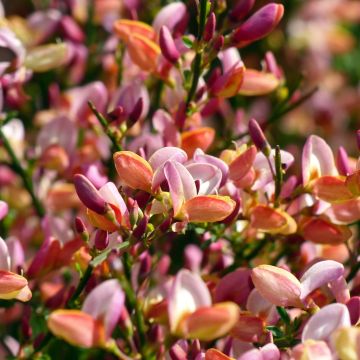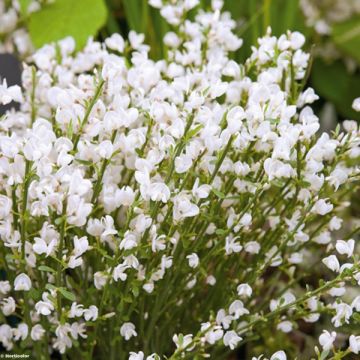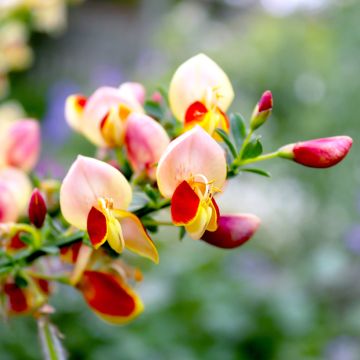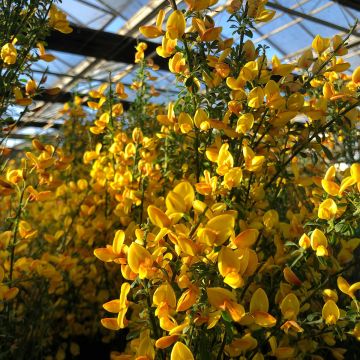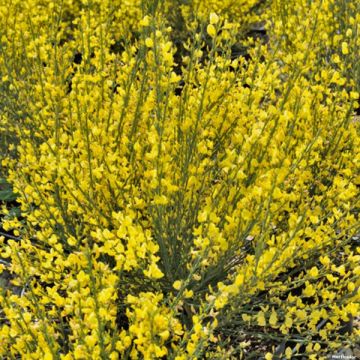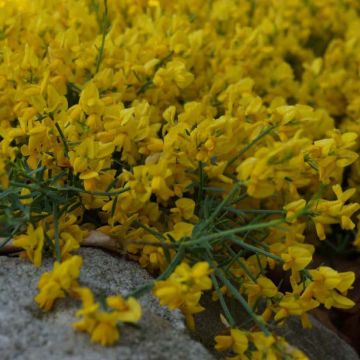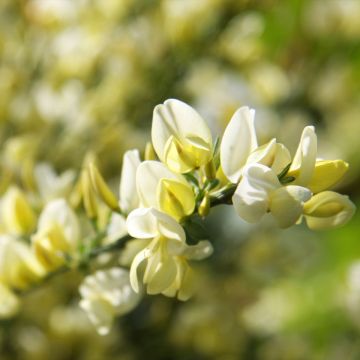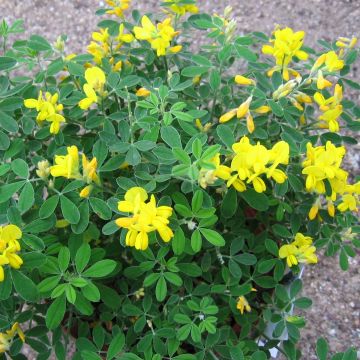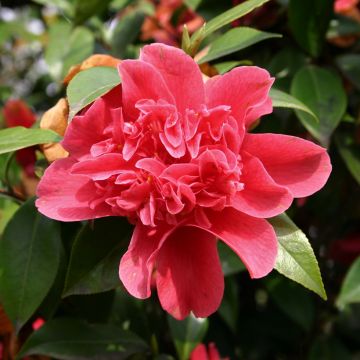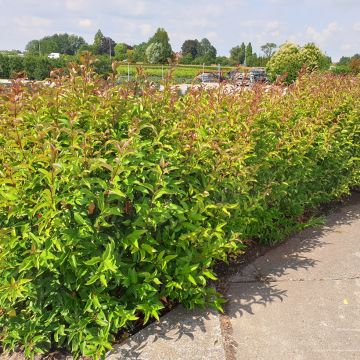

Chamaecytisus purpureus
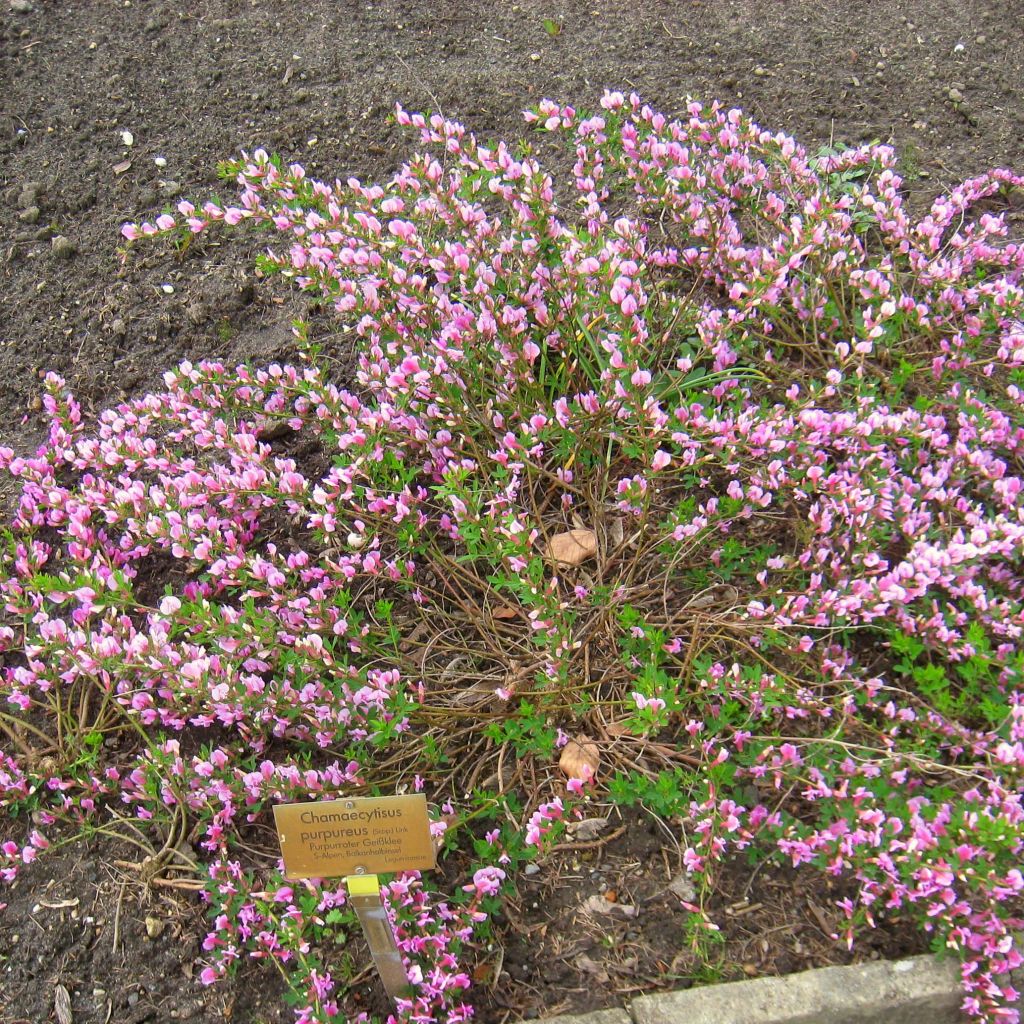

Chamaecytisus purpureus


Chamaecytisus purpureus


Chamaecytisus purpureus
Chamaecytisus purpureus
Chamaecytisus purpureus
Purple Broom
Why not try an alternative variety in stock?
View all →This plant carries a 24 months recovery warranty
More information
We guarantee the quality of our plants for a full growing cycle, and will replace at our expense any plant that fails to recover under normal climatic and planting conditions.
From €5.90 for pickup delivery and €6.90 for home delivery
Express home delivery from €8.90.
Delivery to Corse prohibited: UE law prohibits the import of this plant from mainland France to Corse as part of the fight against Xylella fastidiosa. Please accept our sincere apologies.
More information
Does this plant fit my garden?
Set up your Plantfit profile →
Description
With its spreading and bushy habit and its magnificent purple-pink flowering, the Chamaecytisus purpureus, also known as Purple Broom, is an attractive ground cover bush. In late spring and early summer, it forms a real carpet of flowers that brightens up even the driest areas of the garden. Hardy, drought-tolerant, and easy to grow, the Cytisus purpureus will offer you its splendour without any difficulties! Its compact size also allows it to be grown in containers to create a lovely flowering cascade on your terraces and balconies.
Chamaecytisus is a group of shrubs native to the Mediterranean and the Canary Islands, closely related to the genus Cytisus to which they once belonged. The genus includes shrubs of varying sizes, with trifoliate foliage and clusters of flowers in various colours. The Purple Broom is a dwarf bush with a wide and spreading habit. Its branches are highly branched, initially erect and then arching, or even creeping. When fully grown, it reaches a height of approximately 45cm (17.7in) and a spread of 70cm (27.6in).
Chamaecytisus purpureus makes an excellent ground cover thanks to its bushy and spreading growth. Its branches are green and smooth, growing in all directions. They bear deciduous dark green foliage, composed of alternate leaves with petioles, measuring 1 to 3cm (0.4 to 1.2in) in length. The leaflets are obovate and usually smooth. It is a sucker-forming bush with a trailing root system, making it suitable for use on slopes and embankments to stabilize the soil. In May and June, Chamaecytisus purpureus displays magnificent flowering in shades of pale pink to violet. Highly appreciated for the uniqueness of its multicoloured flowers, it forms a real carpet of flowers that will not go unnoticed in the garden! The branches are covered along their entire length with numerous small butterfly-like flowers with a diameter of 1 to 2.5cm (0.4 to 1in). They appear singly or in groups of 2 or 3, in the axils of the leaves. Black, flat, and hairy pods, which disperse their seeds suddenly with a dry snap, then take over. It is advisable to prune the bush before fruiting to avoid unnecessary stress.
Chamaecytisus purpureus naturally grows in dry places, on rather acidic soils. It prefers sunny exposures (but can tolerate semi-shaded situations), poor and well-drained soils, neutral or slightly acidic. However, it also tolerates slightly chalky soils. Choose its location carefully as it does not tolerate transplanting well.
Cytisus purpureus has excellent hardiness, allowing it to withstand temperatures below -15°C (5°F). Plant your Chamaecytisus purpureus in sandy soil without adding fertilizer. If your soil is heavy, lighten it with sand, or gravel. Water it regularly during the growing season for the first two years after planting. Once established, this small Broom offers good drought tolerance, heat resistance, and disease resistance. A light pruning after flowering is sufficient to keep it vigorous. Accommodating and easy to maintain, Chamaecytisus purpureus will find its place in most gardens! With its spreading and carpeting habit, Cytisus purpureus makes an excellent ground cover. It will provide abundant vegetation and flowering in your rockeries, flowerbeds, and borders. Combine it with plants that thrive in dry and poor soils, with colourful blooms such as Bulbine frutescens 'Hallmark', Ceanothus prostratus, or Salvia grahamii. Chamaecytisus purpureus can also be grown in containers to decorate terraces and balconies with its cascading violet-pink flowers.
Report an error about the product description
Chamaecytisus purpureus in pictures


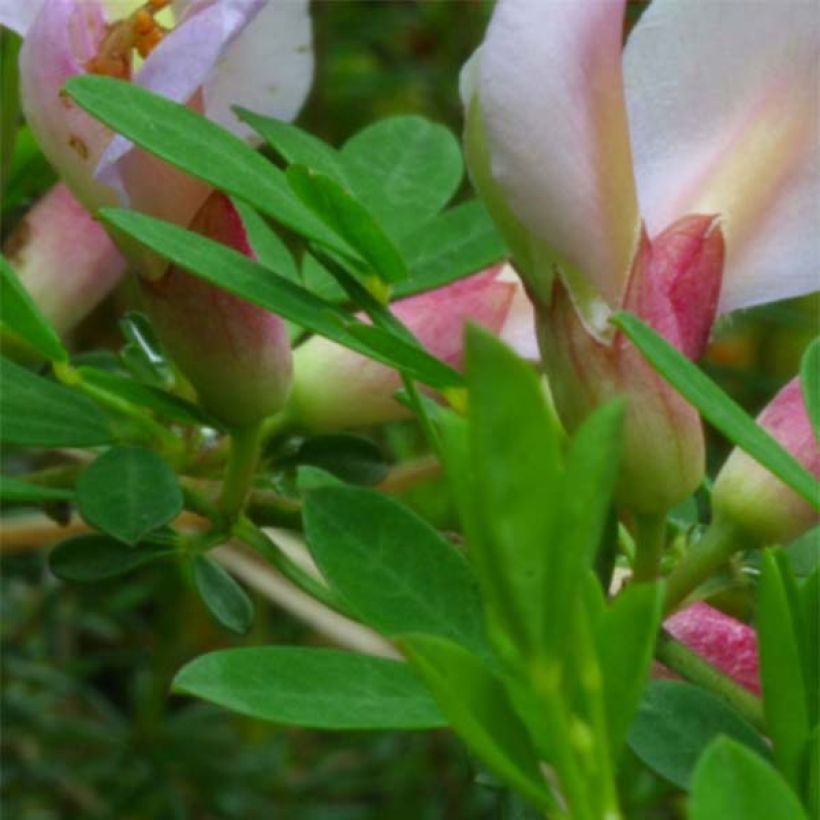



Plant habit
Flowering
Foliage
Botanical data
Chamaecytisus
purpureus
Fabaceae
Purple Broom
Eastern Europe
Other Broom - Cytisus
Planting and care
Chamaecytisus purpureus is native to southeastern Europe. It is found in dry places, on rather acidic and siliceous soils. It appreciates sunny exposures (but accepts semi-shaded situations), poor and well-drained, neutral or slightly acidic soils. It tolerates slightly chalky soils. Choose its location carefully as it does not tolerate transplantation well. The Cytisus purpureus has excellent hardiness, allowing it to withstand temperatures below -15°C (5°F).
Plant your Chamaecytisus purpureus in sandy soil, without adding fertilizer. If your soil is heavy, lighten it with leaf mold, sand or gravel. Water it regularly during the growing season for the first two years after planting. Once established, this small Cytisus offers good drought tolerance, high temperatures and diseases. A light pruning after flowering is sufficient to keep it vigorous. Accommodating and easy to maintain, the Chamaecytisus purpureus will find its place in most gardens!
Planting period
Intended location
Care
This item has not been reviewed yet - be the first to leave a review about it.
Hedge shrubs
Haven't found what you were looking for?
Hardiness is the lowest winter temperature a plant can endure without suffering serious damage or even dying. However, hardiness is affected by location (a sheltered area, such as a patio), protection (winter cover) and soil type (hardiness is improved by well-drained soil).

Photo Sharing Terms & Conditions
In order to encourage gardeners to interact and share their experiences, Promesse de fleurs offers various media enabling content to be uploaded onto its Site - in particular via the ‘Photo sharing’ module.
The User agrees to refrain from:
- Posting any content that is illegal, prejudicial, insulting, racist, inciteful to hatred, revisionist, contrary to public decency, that infringes on privacy or on the privacy rights of third parties, in particular the publicity rights of persons and goods, intellectual property rights, or the right to privacy.
- Submitting content on behalf of a third party;
- Impersonate the identity of a third party and/or publish any personal information about a third party;
In general, the User undertakes to refrain from any unethical behaviour.
All Content (in particular text, comments, files, images, photos, videos, creative works, etc.), which may be subject to property or intellectual property rights, image or other private rights, shall remain the property of the User, subject to the limited rights granted by the terms of the licence granted by Promesse de fleurs as stated below. Users are at liberty to publish or not to publish such Content on the Site, notably via the ‘Photo Sharing’ facility, and accept that this Content shall be made public and freely accessible, notably on the Internet.
Users further acknowledge, undertake to have ,and guarantee that they hold all necessary rights and permissions to publish such material on the Site, in particular with regard to the legislation in force pertaining to any privacy, property, intellectual property, image, or contractual rights, or rights of any other nature. By publishing such Content on the Site, Users acknowledge accepting full liability as publishers of the Content within the meaning of the law, and grant Promesse de fleurs, free of charge, an inclusive, worldwide licence for the said Content for the entire duration of its publication, including all reproduction, representation, up/downloading, displaying, performing, transmission, and storage rights.
Users also grant permission for their name to be linked to the Content and accept that this link may not always be made available.
By engaging in posting material, Users consent to their Content becoming automatically accessible on the Internet, in particular on other sites and/or blogs and/or web pages of the Promesse de fleurs site, including in particular social pages and the Promesse de fleurs catalogue.
Users may secure the removal of entrusted content free of charge by issuing a simple request via our contact form.
The flowering period indicated on our website applies to countries and regions located in USDA zone 8 (France, the United Kingdom, Ireland, the Netherlands, etc.)
It will vary according to where you live:
- In zones 9 to 10 (Italy, Spain, Greece, etc.), flowering will occur about 2 to 4 weeks earlier.
- In zones 6 to 7 (Germany, Poland, Slovenia, and lower mountainous regions), flowering will be delayed by 2 to 3 weeks.
- In zone 5 (Central Europe, Scandinavia), blooming will be delayed by 3 to 5 weeks.
In temperate climates, pruning of spring-flowering shrubs (forsythia, spireas, etc.) should be done just after flowering.
Pruning of summer-flowering shrubs (Indian Lilac, Perovskia, etc.) can be done in winter or spring.
In cold regions as well as with frost-sensitive plants, avoid pruning too early when severe frosts may still occur.
The planting period indicated on our website applies to countries and regions located in USDA zone 8 (France, United Kingdom, Ireland, Netherlands).
It will vary according to where you live:
- In Mediterranean zones (Marseille, Madrid, Milan, etc.), autumn and winter are the best planting periods.
- In continental zones (Strasbourg, Munich, Vienna, etc.), delay planting by 2 to 3 weeks in spring and bring it forward by 2 to 4 weeks in autumn.
- In mountainous regions (the Alps, Pyrenees, Carpathians, etc.), it is best to plant in late spring (May-June) or late summer (August-September).
The harvesting period indicated on our website applies to countries and regions in USDA zone 8 (France, England, Ireland, the Netherlands).
In colder areas (Scandinavia, Poland, Austria...) fruit and vegetable harvests are likely to be delayed by 3-4 weeks.
In warmer areas (Italy, Spain, Greece, etc.), harvesting will probably take place earlier, depending on weather conditions.
The sowing periods indicated on our website apply to countries and regions within USDA Zone 8 (France, UK, Ireland, Netherlands).
In colder areas (Scandinavia, Poland, Austria...), delay any outdoor sowing by 3-4 weeks, or sow under glass.
In warmer climes (Italy, Spain, Greece, etc.), bring outdoor sowing forward by a few weeks.


































